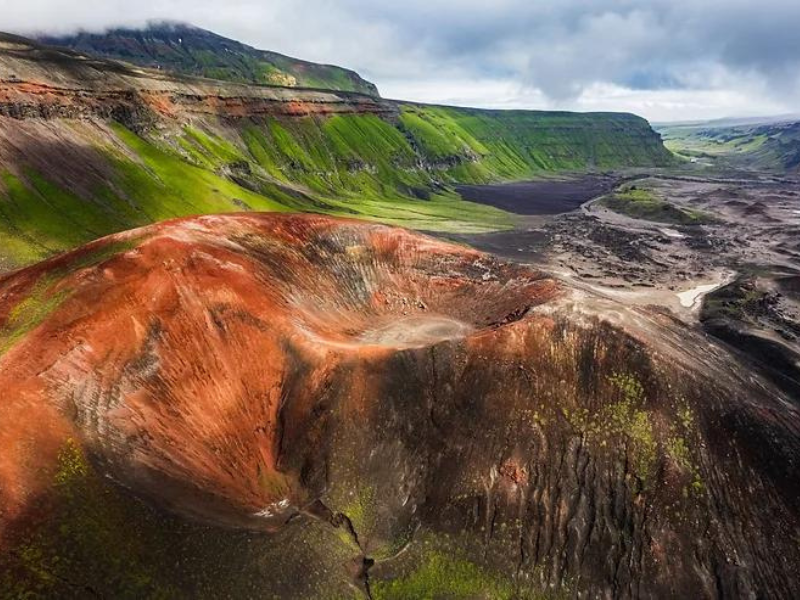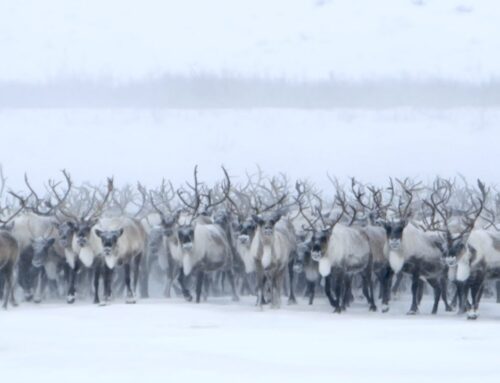The Impact of Okmok Volcano’s 43 BC Eruption on Roman History: Unveiled
The aftermath of Julius Caesar’s assassination in 44 B.C. brought about a period of extraordinary misfortune. A somber shroud blanketed the sky, temperatures plummeted, and the Mediterranean regions endured the torment of drought and famine. Now, a multidisciplinary team of researchers has unveiled a compelling theory behind these peculiar events: A volcanic eruption, occurring some 6,000 miles distant in Alaska’s Okmok volcano in 43 B.C., may have dramatically disrupted the weather patterns in the affected regions—perhaps even playing a role in the rise of the Roman Empire.

This groundbreaking study, detailed in the Proceedings of the National Academy of Sciences, amalgamates evidence from disparate sources, including ice cores, tree rings, and historical records, to pinpoint the volcanic eruption as the catalyst for the post-Ides of March climatic upheaval. The Okmok volcano eruption, a colossal event, resulted in an astonishing average drop of 13 degrees Fahrenheit in temperature across southern Europe and northern Africa. Lead author Joe McConnell, a snow hydrologist at the Desert Research Institute in Nevada, emphasizes the significance of this discovery, noting that the year 43 B.C. ranked as one of the coldest in the past 2,500 years—an impact of profound consequence for an agrarian society teetering on the brink.
The year itself, beyond its climatic disturbances, was marked by seismic political shifts in the Roman Republic. Following the assassination, most of the conspiring senators fled Rome, while Octavian, Caesar’s grand-nephew and adopted heir, asserted his authority with a potent combination of wealth and military might. At just 19 years old, he joined the Second Triumvirate, a trio of consuls wielding dictatorial power. Meanwhile, another member of the Triumvirate, Mark Antony, silenced Cicero, a prominent defender of the republic, in a move that symbolized the republic’s end. Cicero’s writings mentioned the unusual cold during the time of the Okmok eruption. The repercussions were swift, with famine striking northern Italy in April, and Plutarch, the Roman biographer, chronicling the dire circumstances faced by Mark Antony’s army, driven to consume unfamiliar wild fruits, roots, bark, and previously untasted animals. In 42 B.C., both northern Greece and Rome grappled with similar food shortages.
While experts have long speculated about a volcanic eruption’s role in the atypical weather patterns, the exact location, timing, and severity remained elusive. It was only through the analysis of Arctic ice cores that the mystery was unraveled. Greenland ice cores contained elevated levels of sulfur and sulfuric acid, corresponding to early 43 B.C. Furthermore, shards of tephra, glassy volcanic material, found in these cores matched the chemical composition of Okmok, conclusively identifying it as the source.
The Okmok volcano eruption, approximately the same scale as the 1815 eruption of Mount Tambora in Indonesia, triggered the infamous “year without a summer” in Western Europe, as documented by Atlas Obscura. Tree ring records from Scandinavia and North America provided additional evidence of cooler conditions in 43 and 42 B.C., while the Alps experienced a cooling trend starting a decade before the eruption, reaching its zenith in 45 B.C.
Nonetheless, experts caution that the climate model used in the study may accentuate the cooling effects of eruptions, and they argue that political turmoil during Rome’s transition from a republic to an empire was driven by complex political factors within the elite, rather than solely by extreme weather.
The instability persisted even after the volcanic effects dissipated. It was only after more than a decade of civil strife that Octavian emerged as Augustus, the ruler of the newly consolidated Roman Empire. Nevertheless, this study underscores the potential for natural disasters to wield unforeseen influence over historical events. Study co-author Joseph Manning, a historian at Yale University specializing in the fall of Egyptian dynasties, underscores that the study is not simply about “a volcano erupts and a society falls.” Rather, it offers deeper insights into past societal collapses and a greater understanding of our planet’s contemporary environmental challenges.
Photos courtesy of the Smithsonian Institute and The Global Volcanism Program.









